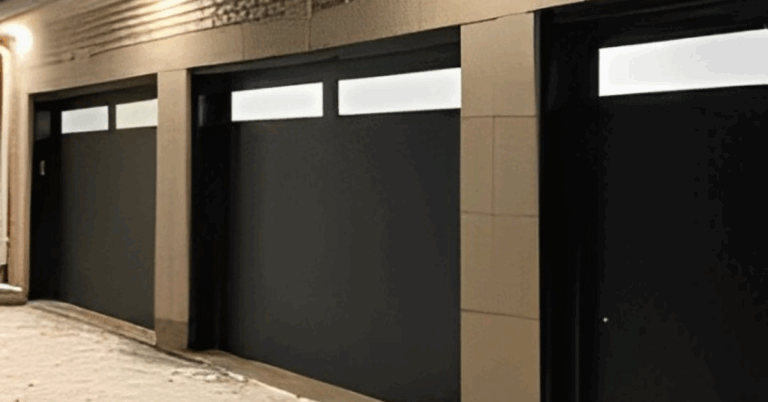The Vital Role of Armed Security Services in Safeguarding Modern Assets
In an age where threats to safety and security are ever-evolving, the significance of Armed Security Services cannot be overstated. These services stand at the frontline of protection, offering both deterrence and rapid response capability. Whether guarding high-value industrial installations, critical infrastructure, or vulnerable commercial premises, armed security personnel provide not just oversight but a visible shield against emerging dangers. In this article, we explore the essential components, operational strategies, challenges, and best practices of armed security services—especially in contexts where protection must be proactive, assertive, and legally compliant.
What Are Armed Security Services?
Armed security services involve deploying trained individuals equipped with firearms (or approved weapons) to protect people, property, and assets. Unlike unarmed guards who rely mostly on surveillance and passive deterrence, armed security professionals carry the additional burden of command-level response: the authority, training, and readiness to neutralize or contain threats when necessary.
These services are used in a variety of sectors:
-
Critical infrastructure (power plants, water treatment, energy grids)
-
High-risk commercial premises (jewelry stores, bullion transportation, cash vaults)
-
Government and diplomatic facilities
-
Chemical, defense, and research facilities
-
High-profile residential zones or luxury complexes
-
Transportation of valuables and high-risk convoys
By combining visible presence, deterrent posture, and tactical readiness, armed security services are a specialized layer in the hierarchy of protection.
Key Components & Capabilities of an Effective Armed Security Service
To deliver reliable and credible protection, armed security services must be built on certain pillars. Below are the essential components:
1. Rigorous Recruitment & Vetting
Because armed personnel wield significant power, their recruitment demands a rigorous screening process. This includes:
-
Background checks (criminal record, financial stability, past employment)
-
Psychological assessments
-
Medical and physical fitness
-
Verification of credentials and previous training experience
Only candidates who exhibit discipline, integrity, and mental resilience should be entrusted with arms.
2. Comprehensive Training & Certification
Merely issuing a firearm is not enough. Armed security personnel must undergo extensive training in:
-
Firearms handling, safety, maintenance, and marksmanship
-
Use-of-force doctrine, escalation, and de-escalation
-
Tactical response, cover and movement, room clearing
-
First aid, emergency medical response
-
Legal frameworks, rules of engagement, and human rights obligations
Ongoing drills and refresher courses ensure that personnel stay sharp and current.
3. Integration with Technology & Surveillance
Modern armed security services are augmented by technology. The fusion of manpower and digital systems increases situational awareness and decision support. For example:
-
Integrated CCTV and sensor networks
-
Access control systems and intrusion detection
-
Communication networks with encrypted radio or digital channels
-
Command & control centers with real-time monitoring
-
Drones or remote camera units in high-risk zones
This synergy enhances response effectiveness and helps preempt incidents.
4. Layered Posture & Deployment Strategy
A sound deployment strategy ensures that armed security presence is not merely symbolic but strategically placed. Considerations include:
-
Risk mapping and vulnerability assessments
-
Static posts and mobile patrols for coverage flexibility
-
Quick reaction forces (QRFs) to respond to breaches
-
Perimeter security reinforcement
-
Synchronized overlap between neighboring posts
This layered posture prevents gaps and ensures backup cover when needed.
5. Legal Compliance & Accountability
Operating with arms carries heavy legal responsibility. Key legal and procedural controls include:
-
Authorization from regulatory bodies
-
Strict adherence to use-of-force guidelines
-
Recording of all incidents (video, logs, after-action reports)
-
Oversight and audits by independent bodies
-
Insurance, liability coverage, and indemnity frameworks
Transparency and accountability reduce misuse risks and bolster credibility.
6. Crisis & Emergency Planning
Because armed security decisions may need to be made in split seconds, robust protocols are essential:
-
Standard operating procedures (SOPs) for threats, bomb scares, intrusion, active shooters
-
Joint drills with local law enforcement, fire, medical agencies
-
Evacuation and lockdown plans
-
Communication protocols and charted escalation paths
Preparedness ensures that an armed response is timely, coordinated, and well executed.
Strategic Benefits of Using Armed Security Services
When implemented properly, armed security offers several compelling advantages:
-
Deterrence: The visible presence of armed guards discourages criminals or aggressors from attempting an attack.
-
Rapid neutralization: In critical incidents, trained armed personnel can act quickly, limiting damage or harm.
-
Force multiplier: Armed officers amplify the protective capacity of ordinary security teams, especially in high-risk zones.
-
Confidence & trust: Stakeholders, employees, and clients often feel safer and more confident knowing that protective cover is robust.
-
Insurance and contractual value: Some clients and insurers consider armed security as part of risk mitigation, potentially lowering liability or premiums.
Challenges & Risks in Armed Security Operations
Armed security is not without its complexities. Service providers must face and mitigate several risk factors:
1. Use-of-Force Misjudgment & Escalation
Mistakes or misjudgment in use-of-force decisions can lead to tragic outcomes, legal liability, or public backlash. Ensuring that personnel reliably distinguish threats from innocent activities is crucial.
2. Firearm Safety & Accidents
Training and procedural safeguards must be strictly enforced to prevent negligent discharges or accidents during duty.
3. Insider Threats or Misconduct
Because armed guards often possess elevated trust, the risk of betrayal or misuse is higher. Rigorous monitoring, rotation, supervision, and surprise audits are needed.
4. Legal & Regulatory Constraints
Different jurisdictions impose varied limits on when and how firearms can be used, licensing conditions, or mandatory oversight. Noncompliance can lead to penalties or license revocation.
5. High Cost
Armed services require more investment: training, equipment, ammunition, insurance, and downtime. For many clients, the cost-benefit balance must be carefully considered.
6. Public Perception & Escalation Risk
In some settings, a visible armed presence may cause discomfort, panic, or escalation rather than calm. Communications and stakeholder management are essential.
Best Practices & Implementation Guidelines
To maximize effectiveness and minimize pitfalls, here are some recommended best practices:
-
Custom Risk Assessment
Begin with a site-specific threat & vulnerability assessment. No two installations are identical; tailor the armed security model accordingly. -
Balanced Force Posture
Combine armed guards with unarmed guards, surveillance, and passive controls so that escalation is controlled and visible force is not overused. -
Tiered Deployment
Use zones with graduated security (outer perimeter, inner sanctum, key sensitive areas), reserving armed coverage for the highest risk sections. -
Continuous Training & Evaluation
Frequent drills, surprise inspections, scenario-based training, and performance reviews ensure high standards. -
Incident Documentation & Review
Maintain video logs, radio records, dispatch logs, and after-action reviews. Analyze every incident to refine policies. -
Coordination with Local Enforcement
Build working relationships with police, emergency services, and local authorities. Run joint exercises to ensure interoperability. -
Community Engagement
In residential or public-facing locations, communicate the presence and function of armed guards to reduce fear and misinformation. -
Redundancy & Backup
Ensure multiple layers of backup are ready. If one armed unit is incapacitated, another must be in place. -
Equipment Maintenance & Sustainment
Regular inspection, calibration, and safe storage of weapons and gear are mandatory. -
Ethics, Rights & Human Dignity Focus
The presence of force must always be tempered by respect for human rights, dignity, and legal bounds.
Scenario Examples: How Armed Security Services Operate in Practice
1. Protection of a High-Security Research Facility
In a facility handling sensitive materials or classified work, an armed security team might control outer gates, inspect vehicles, conduct random vehicle scans, maintain mobile internal patrols, and stand ready to intervene in the case of intrusion or sabotage.
2. Cash Transportation & Valuables Escort
When large sums of cash or precious items are transported, armed security units accompany the convoy, perform route reconnaissance, use decoy vehicles, maintain armed overwatch at stops, and coordinate with traffic authorities.
3. Luxury Residential Estate in a High-Risk Zone
For elite residential communities in areas prone to crime or unrest, armed guards may staff entry gates, make perimeter patrols, respond to alarms, and liaise with local police. In this case, customer relations and discretion also matter heavily.
4. Government or Diplomatic Installation
These locations often must coordinate with official security forces. Armed guards might man perimeters, monitor CCTV, control access, and act under a clearly defined chain of authority in coordination with state agencies.
Measuring Effectiveness & Continual Improvement
To ensure an armed security service delivers real value, metrics and audits are crucial:
-
Number of incidents prevented or defused
-
False alarm rates and response times
-
Use-of-force incidents vs complaints
-
Audit results and compliance reviews
-
Client feedback and satisfaction
-
Losses or thefts after deployment vs before
-
Operational cost vs risk reduction
These measurements should feed into an iterative improvement cycle, with periodic strategy reviews and recalibration.
Ethical & Social Considerations
While armed security is necessary in many high-risk environments, service providers should remain mindful of:
-
Minimizing impact on civilian life
-
Ensuring transparent grievance or redressal mechanisms
-
Protecting civil liberties, especially in mixed-use or community zones
-
Cultural sensitivity in diverse settings
-
Public relations management, so the presence of armed guards is understood rather than feared
Balancing strong protection with respect for the environment in which the service operates is key.
Conclusion
In today’s world, where threats can escalate with little warning, Armed Security Services provide a critical layer of protection. Their role is not merely reactive it is preventive, authoritative, and integral to safeguarding vital assets, installations, and people. Yet their value lies not just in bearing arms, but in the discipline, training, strategy, and accountability that accompany that power.
Thoughtfully designed and rigorously managed armed security deployments can deliver both confidence and tangible protection. For organizations in sectors where stakes are high, embracing professional armed security aligned with legal, ethical, and operational best practices can mean the difference between vulnerability and resilience.







